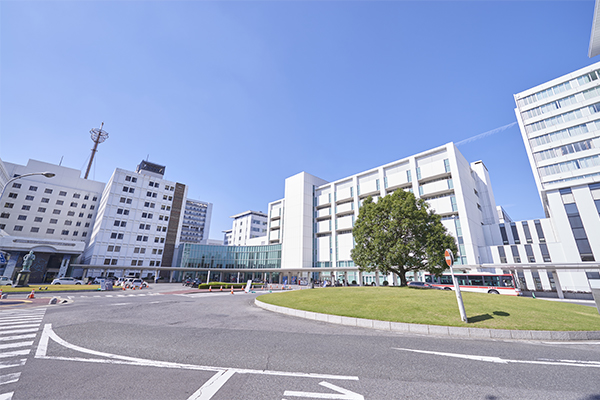- TOP
- Product
- User Reports
- Fujita Health University Hospital (Aichi Prefecture)
Fujita Health University Hospital (Aichi Prefecture)
Interviewees: Shigeki Yamada, Director of Pharmacy Department of Fujita Health University Hospital Takayuki Suzuki, Associate Director of Pharmacy Department of Fujita Health University Hospital Shinji Suzuki, Section Chief of Pharmacy Department of Fujita Health University Hospital
Interviewer: Emika Matsuo, Chief of Sales Planning Department, Yuyama Co., Ltd.
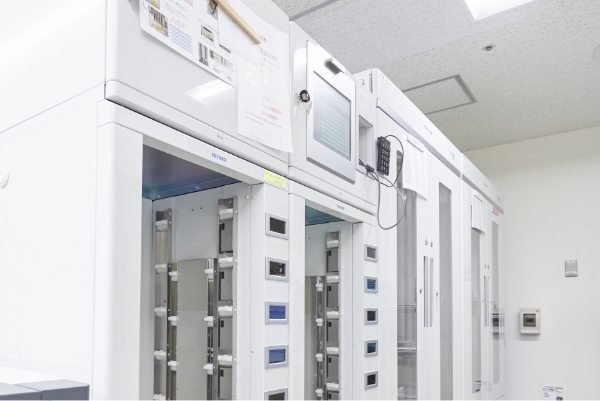
Combining Robots and Assistants to Maximize Performance
Robo-Pick II Fully Automatic PTP Sheet Dispensing Device
Fujita Health University Hospital is the largest hospital in Japan with 1,435 beds, 113 pharmacists, and a total of 1,500 in-hospital dispensing cases per day.
In February 2017, they first introduced Robo-Pick II Fully Automatic PTP Sheet Dispensing Devices and DimeRo Powder Drug Dispensing Robots.
In August of the same year, they further increased the number of Robo-Pick II units to maximize robotic performance, efficiency and dispensing operations.
We spoke with Dr. Yamada, director of the pharmacy department, and the pharmacists who oversee the department about the background of the Robo-Pick II implementation and its impact on operations.

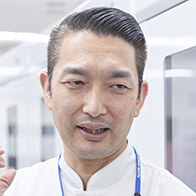
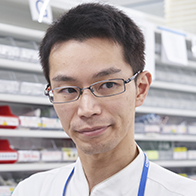
Dr. Yamada, can you tell me about the Pharmacy Department at Fujita Health University Hospital?
The hospital has 1,435 beds and we currently have 113 pharmacists, 21 dispensing assistants, and 1 clerk. It is possibly the largest hospital in Japan in terms of both the number of beds and the number of pharmacists. The ratio of prescriptions dispensed is about 70% inpatient and 30% outpatient. In total, our hospital dispenses an average of 850 prescriptions per day for outpatients and 600 for inpatients.

What events led you to investigate the Robo-Pick II?
We introduced and expanded Robo-Pick II in two phases, but for different reasons.
The first phase of implementation focused on freeing up more staff to work on the ward operations by reducing the number of people involved in dispensing drugs. That’s why we introduced three lines, with one main unit each. By introducing robots such as the Robo-Pick II, we were able to shift 14 people to ward duties.
As for the second phase, in the first phase we introduced three main units but that wasn’t enough to cover the work of 14 personnel. Shifting our pharmacists to the wards resulted in longer wait times for patients, so we began promoting outpatient dispensing as a countermeasure. While this improved wait times, it did not solve the underlying problem because the pharmacists who were sent to the wards had to return to support the operations. We investigated increasing the number of Robo-Pick II machines to reduce wait times. We ran simulations and determined that implementing four additional main units would create a system that did not rely on backup support. That’s when we decided to add four more machines.
After the first-phase implementation, the average wait time was 40 minutes and up to 95 minutes during peak times. But with the second phase, by September (2017), we had reduced wait times down to an average of 20 minutes and maximum of 50 minutes.
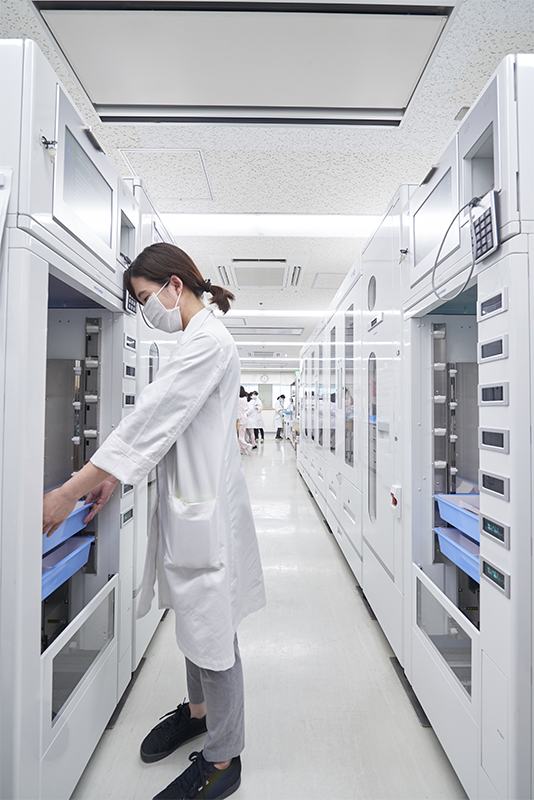
How many personnel are assigned to the dispensing room?
We currently have 15 to 16 pharmacists. Originally, we had 20 to 25 pharmacists, but with the Robo-Pick II, we transferred a total of 14 people over to ward duties. This included 10 pharmacists from the dispensary and some staff from other departments.
The ROBO-PICK II Units are separately installed at three locations. How are they distributed?
We have two lines (Robo-Pick II Machine No. 1 and 2) for outpatient use. We use Machine No.1 for outpatient dispensing throughout the entire day. The peak time for outpatients is around 1pm, so we use Machine No.2 for outpatient dispensing in the morning only and then switch it over to regular inpatient dispensing in the afternoon. The other line is Machine No.3 which is located on a different floor. We use it this for temporary inpatient prescriptions, emergency prescriptions, and nighttime emergency outpatients.
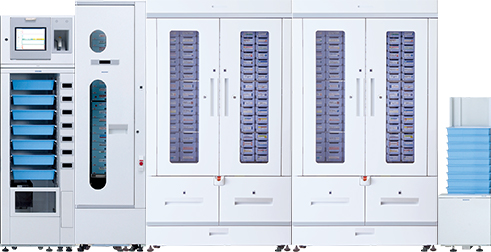
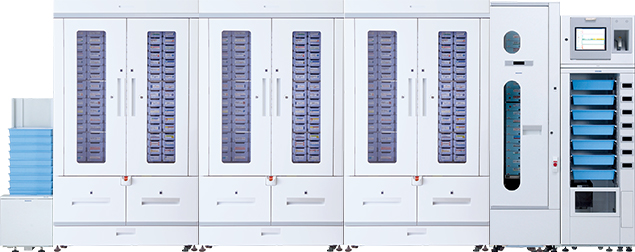
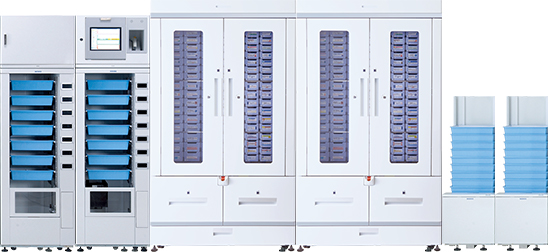
What is the PTP sheet loading rate on Robo-Pick II?
そ We have roughly a three-fifths set rate. There are some drugs we cannot set even though we would like to. We use weekly sheets at our hospital, but these do not meet the Robo-Pick II specification and cannot be loaded. *1
We have modified some of standard medications so we could load them into the Robo-Pick II. If I could make one request, it would be cassette that can hold weekly PTP sheets.
※1 Weekly sheets have a larger sheet size compared to the 10-tablet type. Products outside of the standard dimensions may not be loadable. (Loadable dimension: 79-120 mm (length) × 29-58 mm (width))
What is the Robo-Pick II coverage rate for picking tablets?
The Robo-Pick II can dispense at least one medication in 80 percent of prescriptions and fill about 40 to 50 percent of prescriptions in full.
How well does it perform compared to what you imagined when introducing it?
Robo-Pick II is fast but it also excels on the safety front. I had thought that manual picking would still be faster, but after introducing it, I think that the Robo-Pick II is much more fluid and faster. It is not only very fast, but also very accurate. Afterall, it is a machine, right? Overall, it is performing above what I expected and, according to our calculations, the number of incidents or near misses dropped drastically in the 3 months after the Robo-Pick II units were introduced.
Did you revise the flow of traffic when you increased the Robo-Pick II units?
Yes, we made a major revision to work and traffic flow. In the first phase, we initially placed the Robo-Pick II in an empty room, but found that we had to walk back and forth to use it. So, we decided to review the layout as we increased the number of Robot-Pick II units.
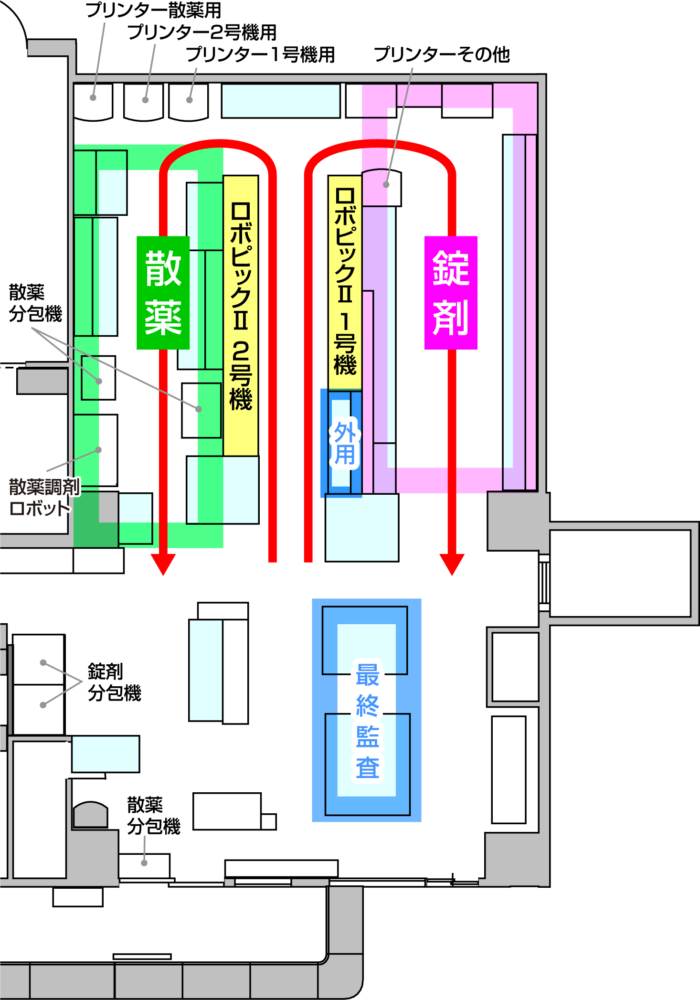
The key word was “one-way.” The design aimed to eliminate back and forth movement. We placed the printer where the tray comes out of the Robo-Pick II so that we can immediately prepare prescriptions, medication pouches, and medications dispensed by the Robo-Pick II. About 40 to 50 percent of prescriptions are picked and completed here, which means we can take them straight to the inspection table. Uncompleted, prescriptions are manually picked according to the “Unloadable Medication Item Preparation Sheet.” The tablet racks are arranged in alphabetical order from the back, starting from the printer side, so that we can pick items in order as they come through. All powdered medication prescriptions come through on the powder medicine table side. We have four printers, but the output is split by the printer location: Robo-Pick II Machine No.1 and Robo-Pick II Machine No.2 prescriptions, powdered medications and medications that do not involve the Robo-Pick II. So, there is no confusion about where to pick up prescriptions or medication pouches.
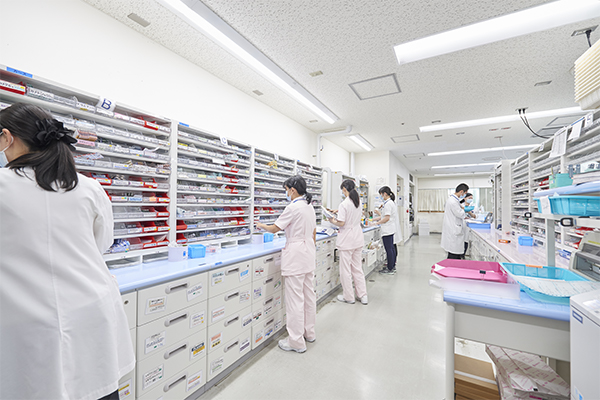
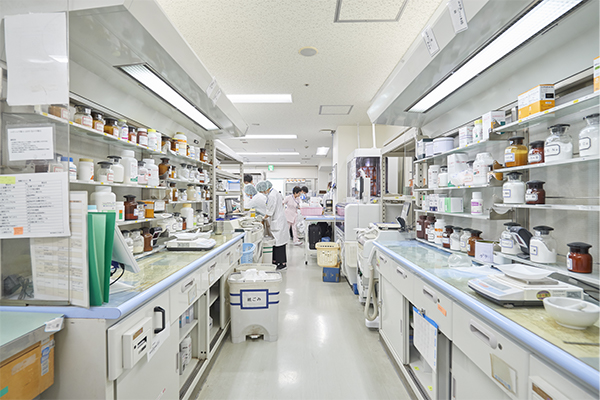
I think that we need to shift from the distribution of products to direct patient care and let machines do the work meant for machines, and humans do the work of humans. This means a proper division of work between humans and machines. Achieving this requires assistants as well as pharmacists.
Even with machines, the prescriptions, medication pouches, and medications all come out in different places, which means we must go and get them each time. Our dispensing assistants match the medication pouches to the medications coming out of the Robo-Pick II.
If our pharmacists had to do that, it would defeat the purpose of having the Robo-Pick II in the first place, right? Our assistants are doing work that does not require a license, which makes the Robo-Pick II more effective.
We now have assistants doing most of the regular inpatient dispensing and about half of the outpatient dispensing.
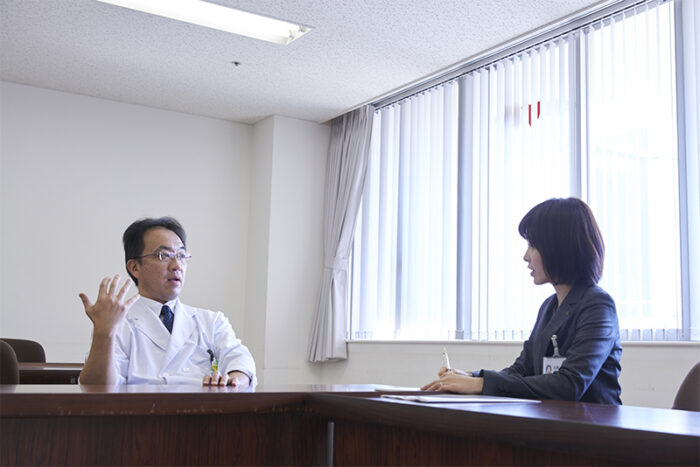
You are not just simply introducing the Robo-Pick II but optimizing it with the use of assistants, it seems.
Exactly. There is no point in just introducing the Robo-Pick II and stopping there. We must create a framework that completes it. And the framework that completes the Robo-Pick II, in our hospital, is the people other than the pharmacists. In other words, our assistants. Pharmacists are needed for inspecting.
In the beginning, our assistants would count while looking at the item preparation sheet. But I told them not to count, because the Robo-Pick II is almost entirely accurate and the pharmacist will pick up any shortfalls during the final inspection. Now, the assistants simply take the output trays directly from the Robo-Pick II to the final inspection table without transferring them.
What plans do you have in mind for the future?
So far, we have optimized dispensing operations, shifted to ward duties, and reduced patient waiting times. In the future, we would like to focus on dosage guidance in the outpatient dispensing area and use the time saved with the Robo-Pick II to improve patient care and satisfaction.
We are currently in the process of having a Patient Service Support Sheet (output device) made with the Yuyama system, which can be used to provide dosage and medication instruction. The sheet shows what needs to be confirmed for each medication and explains the points of attention. The pharmacist checks the confirmation items against the sheet and explains to the patient that they should exercise caution in these areas.
The Patient Service Support Sheet is designed to help pharmacists to give appropriate explanations to patients when handing over medications at the counter.

I would like to ask Dr. Suzuki (associate director in pharmaceutical department), what kind of impact do you feel after using the Robo-Pick II?
To be honest, I did not have high expectations for the Robo-Pick II before it was introduced. I imagined that a human operator would be faster and that I would be standing in front of the robot waiting for it. But it was fast. Not only is it faster than I had imagined, but it also eliminates near misses of picking the wrong items with a barcode system that checks medications as the cassettes are refilled. The tray is divided into six sections, and I imagined that the trays would stack up depending on the contents. But surprisingly, it went smoothly without any problems.
Our hospital has the advantage of having assistants to pick up the trays. If a pharmacist had to do it, I don’t think the benefit would be as great.
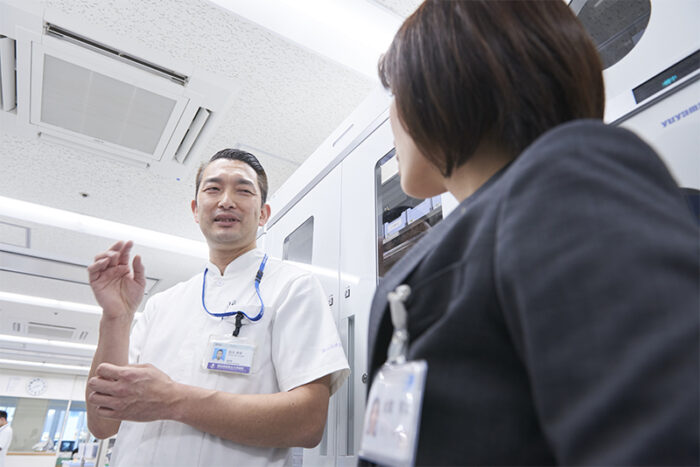
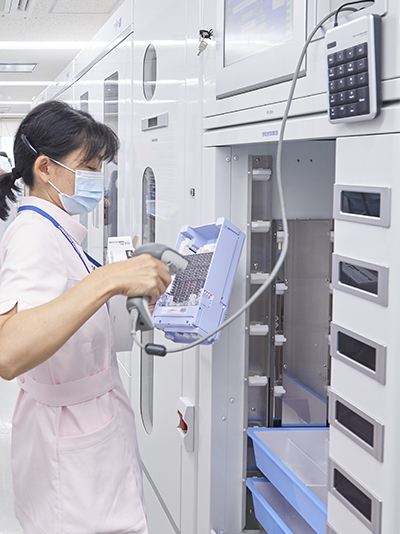
How do you decide which medications to install into the Robo-Pick II?
In the first phase, we selected high frequency-use medications. When we realized that Robo-Pick II did not making pick errors, we started to prioritize multiple specification medical components and similar drugs to prevent mistakes. Currently, we have over 300 types of PTP sheets loaded on the Robo-Pick II.
How do you distribute prescriptions between Machine No. 1 and 2 used for outpatient prescriptions?
Originally prescriptions were alternately assigned to two outpatient lines. However, since only Machine No.2 has a third main unit (three main units), prescriptions for medications loaded on Machine No.2 were sometimes assigned to Machine No.1. This caused additional problems. To solve this, we unified medications for Main Unit No.1 and No.2 of both machines, and, so that prescriptions for medications loaded on Main Unit No. 3 would flow over to Machine No.2 on a priority basis.
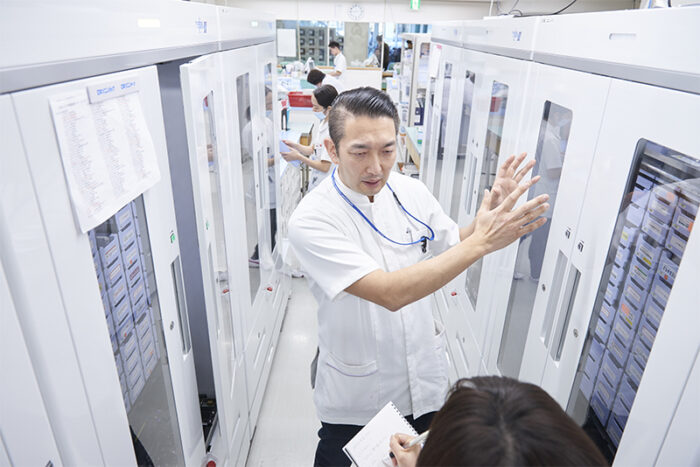
I would like to ask Dr. Suzuki (Section Chief in Pharmaceutical Department), what kind of changes have you seen in your work since introducing the Robo-Pick II?
We used to have only two pharmacists doing the inspections, but we increased that to three to four. Our pharmacists now have more time to focus on inspections because the dispensing assistants can take care of the sorting. The number of prescriptions has not changed, but having more pharmacists means we can be more diligent and calmer with inspections.
On the topic of shifting from product distribution to direct patient care, we increased our patient service counter staff from one person to two. Robo-Pick II has increased the speed of distributing and dispensing medications, so now we must focus on direct patient care and explaining the medications.
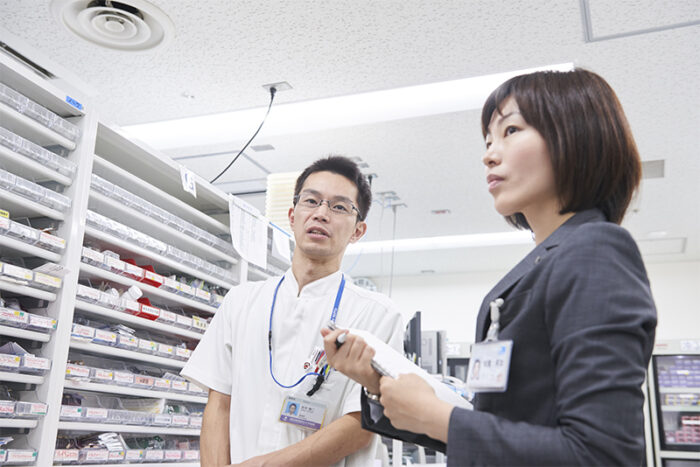
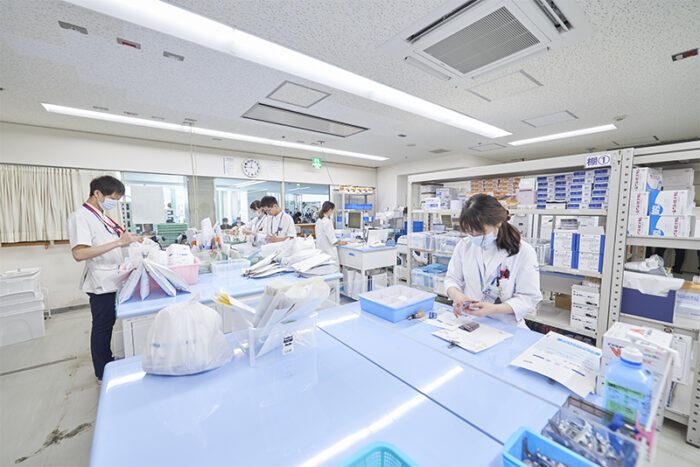
Were there any challenges when introducing the system?
With the introduction of the Robo-Pick II, we changed the tablet cabinet to a smaller one to make room for the installation. One request would be to make the Robo-Pick II more compact, because space in the dispensing rooms is limited. Also, there are many medications, such as weekly sheets, that we want to load but can’t. It would be great to have less restrictions on the type and number of medications that can be loaded.
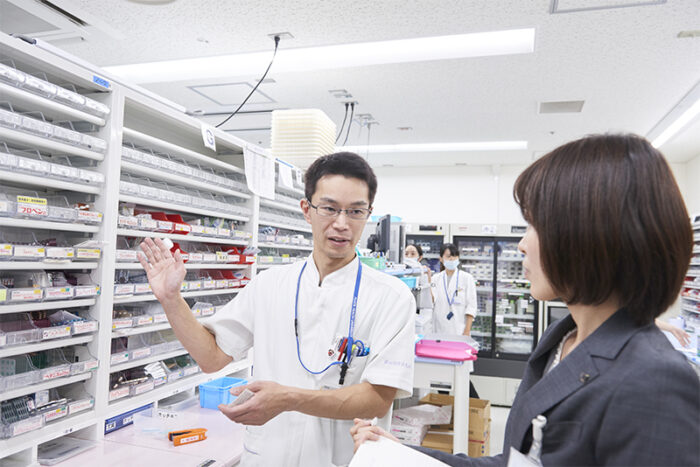
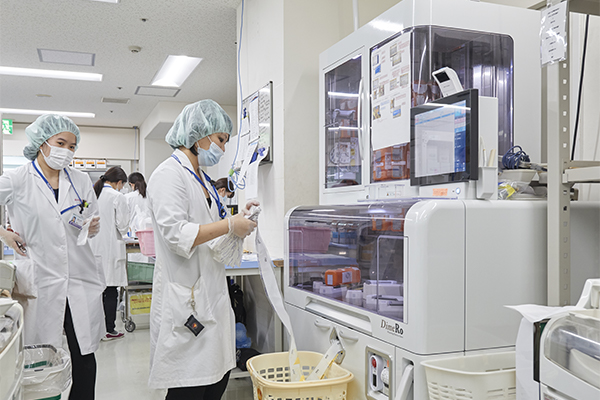
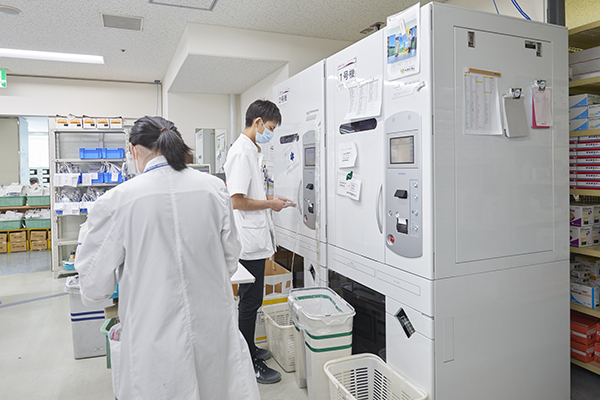
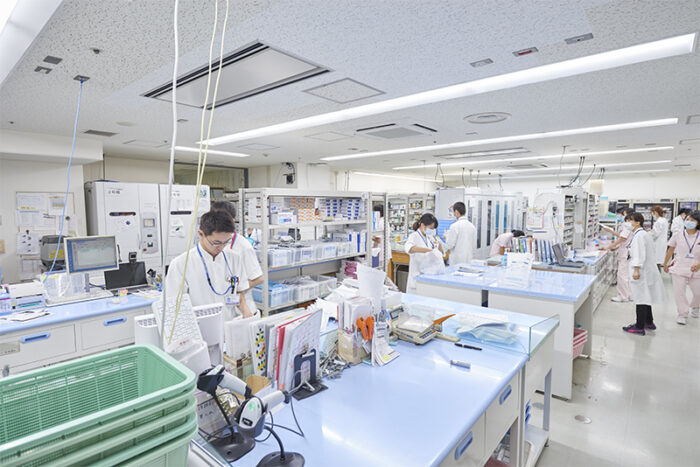
Fujita Health University Hospital (Aichi Prefecture) is such a place.
Combining robots and assistants to maximize performance
Dr. Yamada, who kindly cooperated with us for this interview, emphatically stated that "Simply introducing a robot is a waste of its potential. Yuyama's sales staff should not only sell robots, but also suggest ways to use them.”
Fujita Health University Hospital has achieved operational efficiency by combining robots with dispensing assistants. Their success has led to many requests from other hospitals wishing to observe their operations.
Information as of November 2017
